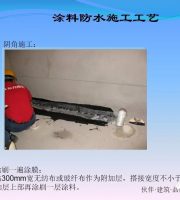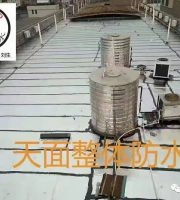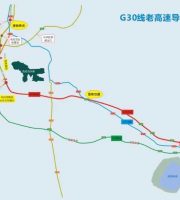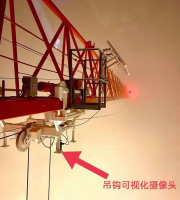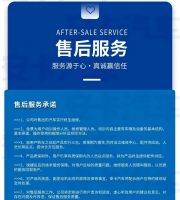In subgrade construction, the tree roots, grass roots and garbage within the scope of subgrade shall be carefully removed
. 
When approaching the design elevation, the virtual height shall be reserved and leveled according to the soil quality to ensure that the design elevation and cross slope are met after compaction, and the width of subgrade on both sides shall be checked according to the road center line to prevent deviation
. 
Cement stabilized macadam base course construction 1
. 
Material preparation: cement stabilized macadam base course materials shall be mixed by large-scale centralized field mixing method, field mixing method, strictly controlled according to the proportion, and the cement content shall not be less than 5%; it shall be transported to the construction site by dump truck, and the initial setting time shall not exceed from the time on the way to before rolling
. 
2
.
Shoulder training: restore the center line and side line of the road, manually cultivate the shoulder of 30cm high and 150cm wide at the position outside the side line, and spray water to wet the base at the same time
.
3
.
Setting out: calculate the quantity of water and stable materials on the road surface according to the transport vehicles, sprinkle lime lines on the road surface and divide them into grids, so that the water is stable, and after unloading the vehicle, they are arranged in rows to facilitate the next leveling work
.
4
.
Shaping and rolling: first use bulldozer for rough leveling, take 2cm virtual paving coefficient, and then use grader for fine leveling
.
With 1cm virtual paving coefficient, the grader scrapes from the center of both sides, and then use roller for rolling after fine leveling
.
Follow the principle of “first two sides, then the middle, first static pressure, then vibration”
.
During the rolling process, check the water stability, top elevation and width, road vertical and horizontal gradient and other measured items at any time To ensure that it is within the specified deviation range, the compactness must reach the specified value
.
5
.
Curing: after the cement stabilized macadam base is rolled and formed, the curing work shall be done well to ensure that the surface layer is moist, and the curing period shall not be less than 7 days
.
6
.
Quality requirements: appearance: compactness
.
The surface is solid and smooth
.
The caulking material shall not float on the surface or gather to form a layer
.
After rolling, the depth of wheel trace shall not be greater than 5mm
.
Inspection frequency of allowable deviation of actual measurement items: thickness ± 10% 1000m2, 1 point flatness 15mm, 2 points per 20m, width not less than design specification, 1 point per 40m, height of center line ± 20mm, 1 point per 20m, cross slope ± 20mm, not more than ± 0.3%, 4 points per 20m, compactness 1 point per 1000m2 The technical requirements of asphalt PC-2 and emulsified asphalt refer to (technical specification for construction of highway asphalt pavement) (jtgf40-2004)
.
Before the prime coat construction, the top surface of the base course should be thoroughly cleaned to keep the top surface of the base course clean; the prime coat emulsified asphalt should be sprayed evenly by the asphalt distributor at one time; when the asphalt distributor does not spray evenly, the manual asphalt distributor should be used
.
Construction of asphalt concrete surface 1
.
Preparation: before the construction of asphalt pavement, the sundries in the cement stabilized layer shall be cleaned up, the damage of the stabilized layer and the holes shall be repaired and leveled in time, and whether the road flat stone, edge stone, inspection well, inlet well cover and other structures are installed stably shall be inspected
.
If there are any problems, they shall be treated locally
.
2
.
Survey and setting out: the elevation of asphalt pavement can be marked with the elevation of asphalt macadam layer and asphalt concrete surface layer on the built road flat stone or curb, and the elevation shall be controlled by setting indicator piles at the intersection or bell mouth
.
3
.
Material: petroleum asphalt is used as binder, and its performance should meet the requirements of three indexes
.
The stone material shall be tough, non weathered, clean crushed stone or gravel with proper gradation
.
The compressive strength shall be greater than 800kg / cm2, the content of impurities such as mica soil shall be less than 2%, the content of acicular and flaky particles shall be less than 10%, and the water absorption shall be less than 3%
.
The sand material shall be coarse sand or medium sand with tough, non weathered particles and appropriate gradation
.
The maximum particle size shall be less than 5mm, and the content shall be less than 5% Hard and clean stone chips with edges and corners shall be used
.
The maximum particle size shall be less than 10 mm
.
The content of powder less than 0.07 mm shall not exceed 5%
.
The porosity of stone powder shall not be less than 45%
.
The fineness shall all pass the No
.
100 sieve
.
The content of 0.075-0.005 mm particles shall account for 80-90% of the total weight
.
4
.
Mixing and transportation of asphalt mixture: (1) trial mixing of asphalt mixture shall be carried out according to the designed asphalt amount, Marshall stability test shall be conducted after sampling, and each test value shall be compared with the indoor mix proportion test results to verify whether the asphalt amount is appropriate, and appropriate adjustment can be made if necessary
.
(2) Determine the appropriate mixing time, the asphalt mixture after mixing is uniform, without discoloration, separation of coarse and fine materials and agglomeration
.
(3) Determine the appropriate heating and factory temperature, the mixture factory temperature is: petroleum asphalt mixture 130 ~ 160 ℃
.
(4) The asphalt mixture shall be transported to the construction site by dump truck
.
A thin layer of oil and water (diesel: water is 1:3 mixture) shall be coated on the bottom plate and surrounding wall of the carriage
.
The transport vehicle shall be covered with covering facilities
.
(5) The temperature of asphalt mixture transported to the paving site shall not be lower than 130 ℃
.
5
.
Paving of asphalt mixture: the project adopts mechanical and manual paving
.
In places that cannot be paved by machinery or have been paved, such as local lack of materials at the edge of structures, obvious segregation of local mixture and obvious irregularity on the surface of base course, manual paving is adopted at small intersections of units along the line
.
During the construction, pave by road width, the joint should be tight and straight, and set sample piles to control the thickness
.
The paving temperature shall be controlled, the asphalt mixture shall not be lower than 100 ° and the loose paving coefficient of mechanical paving shall be 1.15-1.35
.
The adjacent two paving belts shall be lapped for 10cm
.
Special personnel shall be assigned to fill the gap of longitudinal joint with hot material and level the joint, so as to make the mixture at the joint full and prevent longitudinal joint cracking
.
When the paving work is interrupted and the paved asphalt mixture drops to the atmospheric temperature, if the paving is continued, the method of “continuous hot joint” shall be adopted, and the treatment shall be carried out carefully
.
6
.
Rolling: (1) control the temperature of asphalt mixture and the speed of roller at the beginning of rolling
.
(2) The roller rolls from the outside to the center
.
The adjacent rolling belt overlaps 1 / 3-1 / 2 wheel width, and finally rolls the central part of the road, with a complete rolling range of one pass
.
When there are baffles, curbs, shoulders and other supports at the edge, the road shall be rolled close to the supports
.
(3) During initial compaction, use 6-8t double wheel roller or 6-10t vibrating roller (close the vibrating device) for initial compaction twice
.
After initial compaction, check the flatness and road arch, and repair if necessary
.
During re compaction, use a 10-12t three wheel roller, a 10t vibrating roller or a corresponding tire roller, and roll for 4-6 times until it is stable and has no obvious wheel trace
.
During final compaction, use 6-8t double wheel roller or 6-8t vibrating roller (close the vibrating device) for 2-4 times
.
(4) When the asphalt mixture sticks to the roller during the rolling process of the roller, sprinkle a small amount of water on the roller, and do not sprinkle diesel oil
.
(5) The roller turns in the road section which is not rolled and cooled, and stops in a U-turn mode to wait
.
When the vibratory roller is running on the formed road surface, it should be turned off
.
(6) Open traffic: after the asphalt concrete pavement is rolled and survived, the traffic can be opened when the surface temperature drops to the atmospheric temperature, but in general, it will be opened the next day after the construction..
.

